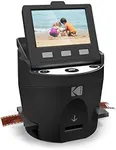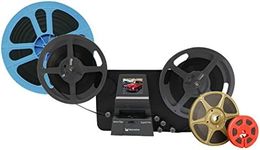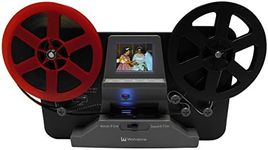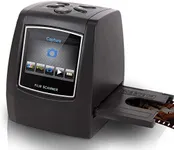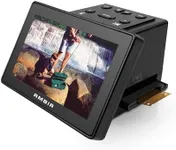Buying Guide for the Best 8mm Converters
Choosing the right 8mm converter can be a bit overwhelming, but with the right knowledge, you can find the perfect one to suit your needs. An 8mm converter is a device that allows you to convert old 8mm film into digital format, preserving your precious memories for years to come. When selecting an 8mm converter, it's important to consider several key specifications to ensure you get the best quality and functionality for your needs.ResolutionResolution refers to the clarity and detail of the digital image produced by the converter. Higher resolution means more detail and better image quality. Common resolutions include 720p, 1080p, and 4K. If you want to preserve your films with the highest possible quality, opt for a converter that supports 1080p or 4K resolution. For casual viewing or sharing on social media, 720p may be sufficient.
Frame RateFrame rate is the number of frames captured per second. It affects the smoothness of the video playback. Standard frame rates include 24fps, 30fps, and 60fps. For most 8mm films, 24fps is the traditional frame rate and will give you a more authentic look. However, if you prefer smoother motion, you might want to choose a converter that supports 30fps or 60fps.
CompatibilityCompatibility refers to the types of 8mm film the converter can handle, such as Standard 8mm, Super 8, or Single 8. Make sure the converter you choose is compatible with the specific type of film you have. Some converters are versatile and can handle multiple types, which can be useful if you have a variety of film formats.
Ease of UseEase of use is important, especially if you're not very tech-savvy. Look for converters with user-friendly interfaces, clear instructions, and minimal setup requirements. Some models come with software that simplifies the conversion process, making it easier to edit and share your videos.
ConnectivityConnectivity options determine how you can transfer the digitized videos to your computer or other devices. Common options include USB, SD card slots, and direct-to-computer connections. Choose a converter with the connectivity options that best suit your workflow. For example, if you prefer to edit videos on your computer, a USB connection might be the most convenient.
Speed of ConversionThe speed of conversion refers to how quickly the converter can digitize your film. Faster conversion speeds can save you a lot of time, especially if you have a large collection of films. However, faster speeds may sometimes compromise quality, so it's important to find a balance that works for you. If you have a lot of films to convert, look for a model that offers a good speed without sacrificing quality.
Image Enhancement FeaturesImage enhancement features can improve the quality of your digitized videos. These may include color correction, brightness adjustment, and scratch removal. If your films are old and have deteriorated over time, these features can help restore them to their former glory. Look for converters that offer these enhancements if you want the best possible digital version of your films.

